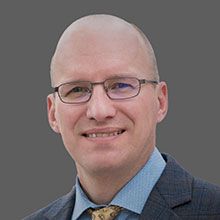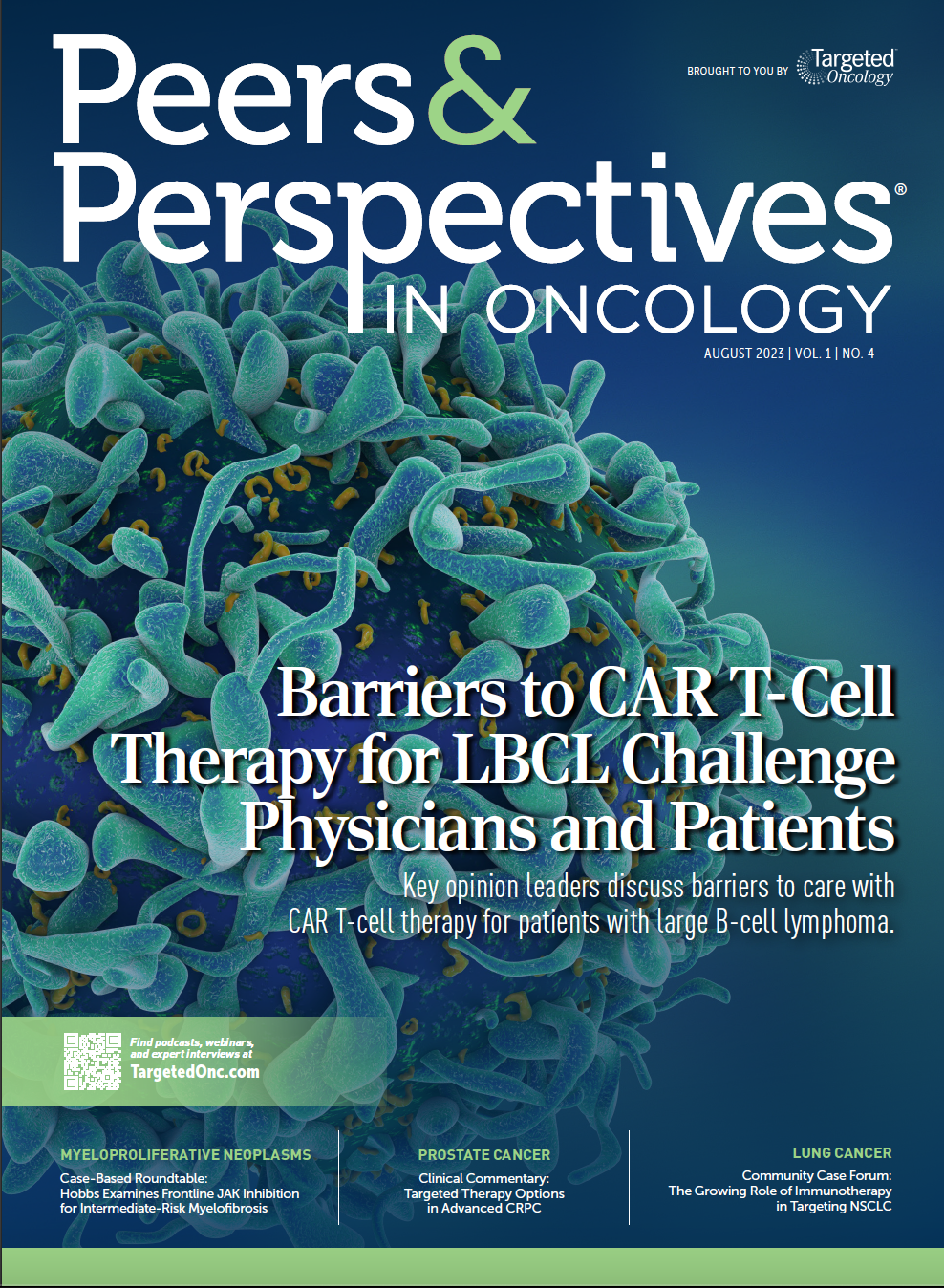Integrating the Practical Geriatric Assessment Into Oncology Practice
In an interview with Targeted Oncology™, William Dale, MD, PhD, vice chair of academic affairs in the Department of Supportive Care Medicine and director of the Center for Cancer and Aging at City of Hope, discussed the setup of a new practical geriatric assessment for oncologists to implement into their practice as part of updated guidelines from the American Society of Clinical Oncology.
William Dale, MD, PhD
Director
Center for Cancer and Aging
Vice Chair, Academic Affairs
Department of Supportive Care Medicine
City of Hope
Duarte, CA

TARGETED ONCOLOGY: What are the essential components of a geriatric assessment?
DALE: One of the challenges for this assessment is how big it has to be to achieve the value that we found for it. In the guideline, both in the original one and this one, we have what we call essential domains, which should be covered to be considered a full assessment. It can’t only be an assessment of, say, cognition or a function, but it has to include all of the domains to achieve their function, and that’s the challenge to make it short enough. But the components are broadly in 4 categories: physical, mental, medical, and social, and within those there is a little more specificity.1
[For example,] physical involves how fast can [the patient] walk, or their gait speed? How often do they fall? Are they able to function in their normal environments, like going to the bathroom or getting to the grocery store? Mental includes cognition and emotion, so depression and anxiety, whereas medical is their other comorbidities, current medications, and nutrition, and social is just [the question,] do they have social support?
What are community oncologists missing if they do not implement these geriatric assessments for their older patients?
I’ll note that [a majority] of our cancer patients are [seeing] community oncologists, [whereas] fewer are at centers like our comprehensive cancer Center at City of Hope and others. [Community oncologists] are busy and they have a lot to accomplish, and the development in the field is rapid. With all the things that oncologists are trying to fit into their visit with patients, adding in something else becomes just another challenge in their minds, and I’d say that is what is often missed in this sense.
It’s difficult; they’re thinking about [the patient’s] cancer...[and what] therapies to use, but what we are emphasizing is that the context in which the cancer is occurring for patients gets overlooked, and it can affect the cancer therapy meaningfully. If the patient is in a lot of pain or has a lot of symptoms that are overlooked, they may not complete their cancer therapy, or if they’re having cognitive problems, like brain fog, because of the therapy, that can affect whether they’re making good decisions at home, even if you’re missing your medications. What [community oncologists are] missing is this bigger context, mostly because they’re busy, and we’re trying to make this something that gives them the information in the minimal amount of time and resources.
How does the response from community oncologists in your research drive the structure of this assessment?
The first thing we found in the survey we did is that if you’re aware of the guidelines, you’re about 2 to 4 times more likely to actually [address these issues]. That makes us feel good that updating the guidelines has some value. If nobody’s using them that would be an issue, but we think they are taken up by those who read and digest them. There are 2 big buckets [of challenges], I would say, that were preventing people from doing the guideline recommendations the first time around, and we’ve tried to address them with this practical assessment.
What are the 2 areas impacting the use of these assessments in the community setting? How does the practical geriatric assessment address these barriers?
One area is people who were not previously aware of the guidelines, or weren’t comfortable with them, who said, “I could do the assessments, but I don’t know what to do with it.” [For example], if they get this cognitive assessment, [they say they] don’t know what it means and are not sure what they’re supposed to do [with it; maybe they weren’t] taught how to do this. A physician has a set of their own understandings and comfort level with using the assessments. The second area is people who said, “We believe you; we think these are important. We even understand the tools, but we’re not [equipped] to do them.
They take too much time. We can’t fit them into our workflow.” The resource use becomes the biggest challenge, or [because of] the way their clinic is organized [they can’t take these assessments on]. To address both of those issues, we spent quite a bit of time talking to community oncologists and focus groups and running it through some experts to say, how much can we boil [this assessment] down to just the basics? Here’s a domain like falls, here’s the 1 question you need to ask to address falls, and then if they have more than 1 fall in the last 6 months, what should you do about it?
[That’s where] we give specific recommendations in [the provided] action chart and...it goes through domain by domain to put it on 1 page and provide the tool, the threshold, and here’s what they should do. People can quickly digest the information [this way] and just have it with them, almost like a lab report. When someone walks into clinic with a lab report, [the oncologist knows the patient is] anemic and that they need to address it. We would like them to have the same level of comfort with this...and recommend the right supportive care interventions.
Does the patient’s actual age factor into their assessment outcomes as much as the other domains mentioned?
Age is really a proxy; it’s not any particular age or threshold that matters as much as age-associated concerns that come up. Cognition becomes much more likely to be an issue as you get older; having more diseases or more comorbidities also become more likely as you get older. In the 2 large studies that were done [to look at these assessments], 65 and 70 years of age were the 2 age cutoffs that were used [GAP70+ (NCT02054741); GAIN (NCT02517034)].2,3 As you get older, age matters; somewhere around 70 to 75, just being older starts to be an issue independent of some of these other things, most likely because of organ function concerns. Kidney function just continues to decline as you get older, and we don’t have any way to stop that.
Other things like your cognitive function pretty much stay the same, but you’re slowed, and your muscles tend to decline. There is an age factor right around 72 or 73 in the studies that we’ve done, and we roughly use 65 or 70 as our cutoff.
What comes next for the patient’s treatment after a geriatric assessment takes place?
[What we saw] in the GAP70+ study was that oncologists adjust their cancer-directed therapies as a response to knowing more information from the geriatric assessment.2 Now they’ll say they’re worried because [the patient is] frailer and has more issues that they need to deal with.
They’ll decrease their chemotherapy dose or switch to another therapy that they think has less toxicities... they [ultimately] adjust based on the profile of the patient. That presumably lowers the likelihood of chemotherapy toxicity, or systemic therapy toxicity, by adjusting their decision-making. For a community oncologist, even if you don’t have other pieces of the system in place, you can adjust the way you think about these patients and adjust the way you treat them from a cancer perspective.
Another thing that [a community oncologist can do is] what I would call prehabilitation. If they identify something first, like [the patient’s] pain is not managed, [then they can] manage that before giving them something that might cause extra pain or peripheral neuropathy. [From there an oncologist can ask,] what’s your referral plan once you know that people are having deficits?
The way that the assessment is set up, it’s not just [a matter of referring] them to everybody. [If the patient has a specific] problem, then let’s send them to this person [who can help them based on their] context. This is a team sport... the oncologist doesn’t have to do it all; they just need some people around them who can help with the things that they’re not as expert at and, frankly, they should focus on the cancer care.
Where do you see these assessments fitting into the workflow of a community practice?
This isn’t something [where] the physician has to take 10 or 15 valuable minutes out of [their appointment with a patient] to conduct these assessments; they can be done separately. I hope we can figure out ways to change the financing and organization [around this], because I think if we got more efficient, we could put this into the workflow, and then reimburse people better...that way they’re not seen as a financial liability in addition to [requiring] extra time and resources. We have also found that we can use some of the existing [Current Procedural Terminology] codes in the United States....
There are ones for psychosocial interventions that can be used, and we want to help people figure out how to financially make it viable. I would also say long term, it’s better if we can keep people out of hospital because they’re not having toxicities. That would help us justify to payers the value of doing this and a little investment up-front would be worth the downstream benefits.
REFERENCES
1. Dale W, Klepin HD, Williams GR, et al. Practical assessment and management of vulnerabilities in older patients receiving systemic cancer therapy: ASCO guideline update. J Clin Oncol. Published online July 17, 2023. doi:10.1200/JCO.23.00933
2. Mohile SG, Mohamed MR, Xu H, et al. Evaluation of geriatric assessment and management on the toxic effects of cancer treatment (GAP70+): a cluster-randomised study. Lancet. 2021;398(10314):1894-1904. doi:10.1016/S0140-6736(21)01789-X
3. Li D, Sun CL, Kim H, et al. Geriatric assessment-driven intervention (GAIN) on chemotherapy-related toxic effects in older adults with cancer: a randomized clinical trial. JAMA Oncol. 2021;7(11):e214158. doi:10.1001/jamaoncol.2021.4158

Survivorship Care Promotes Evidence-Based Approaches for Quality of Life and Beyond
March 21st 2025Frank J. Penedo, PhD, explains the challenges of survivorship care for patients with cancer and how he implements programs to support patients’ emotional, physical, and practical needs.
Read More